Description
Frozen Beef Topside
Beef topside (also known in some markets as top round, inside round, or “chã de dentro” in Brazil) is a lean cut from the inner thigh of the cow’s hindquarter. When frozen, this cut combines convenience, cost‐efficiency, and nutritional value — but also requires care in storage and cooking to bring out its best. In this article you’ll learn everything you need to know about frozen beef topside: what it is, its properties, how to buy and store it, cooking tips, nutritional info, and ideas to enjoy it at its best.
1. What Is Beef Topside / Top Round?
1.1 Anatomy & Terminology
-
The topside cut is derived from the round primal, which is the rear leg / hindquarter portion of the cow, particularly the inner thigh. Spiegato+2Meatex+2
-
In Portuguese (Brazil), it corresponds often to „chã de dentro”, and sometimes top round or inside round. Brasil Agosto
-
It is boneless or nearly so, often with a fat cap (a layer of fat) on one side. That fat cap may be left intact to help keep moisture during roasting. Meatex+2Margaret River Fresh+2
1.2 Characteristics of the Cut
-
Leanness: One of the leanest cuts — low in intramuscular fat (marbling). While that makes it healthier in some respects, it also means it’s more prone to be dry or tough if cooked improperly. Spiegato+2Meatex+2
-
Texture: Muscle fibers are reasonably fine, especially compared to outside round / silverside, though still firmer than more premium cuts (sirloin, rib roast, tenderloin). Spiegato+1
-
Flavor: Because it’s lean, its natural beef flavor shines through. There is less fat to mask or carry flavors, so proper seasoning or marinades helps.
1.3 Frozen vs Fresh
Freezing topside (whether whole joint or steaks) affects its handling:
-
Pros: extended shelf life, less waste, ability to buy in bulk (often cheaper), always having protein on hand.
-
Cons: If freezing or thawing poorly done, risk of freezer burn, loss of moisture, tougher texture, diminished flavor.
2. Nutritional Profile Frozen Beef Topside
Knowing what you get when you eat topside beef helps you plan meals wisely.
| Nutrient | Approximate Per 100 g (roasted / trimmed of fat) |
|---|---|
| Energy | ~100–130 kcal Carrefour Kenya+3Nutracheck+3FatSecret+3 |
| Protein | ~26-30 g Carrefour Kenya+2Nutracheck+2 |
| Fat | ~2-4 g (very low) Nutracheck+2FatSecret+2 |
| Saturated fat | quite low (part of total fat) |
| Carbohydrates / sugars | ≈ 0 g |
| Iron, B Vitamins (B12, niacin, riboflavin) | good source (like most lean red meats) |
So: lean protein, low fat, making it useful for heart‐healthy or weight‐management diets, as long as one cooks it in a way that doesn’t dry it out or add excessive fat.
3. Buying & Storing Frozen Beef Topside
Frozen “beef top” can be a great asset in your kitchen — but buying well and storing correctly are essential.
3.1 What to Look For When Buying
-
Source & Certifications: Depending on where you live, check for quality marks, Halal or organic certification if relevant. Many suppliers of frozen beef topside are certified. Marfrig Global Foods SA+2mcdglobalconcept.com+2
-
Freezing Process: Flash freezing or blast freezing (“BQF” in some listings) helps preserve cellular structure, reduces ice‐crystal damage, and maintains better texture. brazilsfrozenmeat.com+1
-
Packaging: Vacuum-sealed or tightly wrapped, with minimal air. Carton / box externally labelled. Good labelling: date frozen, weight, origin.
-
Visible quality: Even frozen, check for frost / freezer burn (white patches), bad smells when thawed, discolouration.
3.2 Storage Guidelines
-
Temperature: Frozen state ideally at −18 °C or lower. Some suppliers blast freeze at −40 °C then store at −18 to −20 °C. rivellialimentosbrazil.com+1
-
Length of Storage: Topside, if properly frozen, can last many months — often 12–24 months in commercial frozen storage with good packaging. But flavor & texture may degrade slowly. mcdglobalconcept.com
-
Thawing Methods:
-
Refrigerator thawing (slow): 24-48 h depending on size of joint.
-
Cold water thawing: In sealed bag, change water frequently. Faster but needs closer supervision.
-
Avoid room temperature thawing because of bacterial growth risk.
-
-
Refreezing: Generally not advised once fully thawed, unless cooked first; refreezing raw meat can worsen texture.
4. Cooking Frozen / Defrosted Beef Topside – Turning Toughness Into Tenderness
Because topside is lean and less forgiving, thoughtful cooking makes the difference between a dry chew and a tender, flavorful dish.
4.1 Preparing the meat
-
Bring defrosted but still cold meat closer to room temperature before cooking—about 30-60 minutes, depending on size. This helps cook more evenly.
-
Trim off excessive fat if desired, but ideally leave a thin fat cap (if present) to help baste the meat from above during roasting.
-
Season well: salt (coarse or kosher salt), pepper, herbs. Marinades or rubs with acidic elements (vinegar, lemon, Worcestershire) help break down connective tissue slightly.
4.2 Cooking Methods
Here are some of the best ways to cook frozen / thawed topside:
| Method | Pros | Key Tips |
|---|---|---|
| Roasting / Oven Joint | Good when you want slices; can handle medium/rare if careful. | Preheat high, sear if possible, then reduce heat; roast in a fat-cap-side up position. Use meat thermometer. Rest after cooking to allow juices to redistribute. Cooking times vary (see below). Express+3Supergolden Bakes+3The Organic Butchery+3 |
| Slow Braising / Pot Roast | Moist-heat cooking helps tenderize; good for tougher fibers. | Use stock, wine, vegetables; keep covered; long, low heat. Moisture and time are your allies. |
| Sous-vide | Excellent for tenderizing and retaining moisture; precise control. | Long cook at moderate temp (e.g. 55-60 °C for rare/medium rare), finish with sear. |
| Stewing / Dicing | Good for soups, curries, chili. With smaller pieces, connective tissue breaks down well. | Brown pieces first; simmer slowly; use good liquids/spices. |
| Thin slicing / Stir-Fry | If partially thawed, slicing thin against the grain gives acceptable tenderness for quick cooking. | Be sure to slice thinly; cook quickly; use marinades to further improve texture. |
4.3 Roast Times & Temperatures
Here are general guides for roasting a joint of topside:
-
Rare: ~20 minutes per 500 g at ~200-220 °C for initial sear; then reduce. Supergolden Bakes+1
-
Medium: ~25 minutes per 500 g. Supergolden Bakes
-
Well done: ~30 minutes per 500 g. But note: well done tends to dry out lean cuts. Use moist heat or cover. Supergolden Bakes+1
Resting is vital: allow ~15-30 minutes (depending on weight) resting under foil before carving. This lets juices redistribute and reduces dryness. Supergolden Bakes+1
4.4 Avoiding Common Mistakes
-
Overcooking: because of low fat, topside can dry quickly; aim for desired doneness rather than just “safe temp” (except when safety is a concern).
-
Slicing wrong: always cut against the grain; slicing with the grain will give more chew.
-
Skipping sear: searing locks in flavors, creates crust, helps seal juices.
-
Too high temperature whole way: start high (for sear) then reduce, or use slow cook methods.
5. Frozen Beef Topside in Recipes
To help spark ideas, here are several recipe styles or dishes where frozen-or thawed topside can shine.
5.1 Roasted Beef Joint
-
Classic roast, perhaps with herb crust (rosemary, thyme, garlic), served with gravy, roasted vegetables, Yorkshire puddings (if in UK), or side sauces.
-
Example: “Topside with Rosemary & Balsamic Onions” – rub with rosemary/salt/pepper, roast, serve with caramelised onions with balsamic vinegar. abelandcole.co.uk+1
5.2 Pot Roast / Casserole
-
Brown the beef, add vegetables (carrot, onion, celery), herbs, broth; cook low and slow until tender.
-
Serve with mashed potato or polenta, or over noodles.
5.3 Diced or Shredded Beef
-
Dice and use in stews, chili, beef stroganoff, curries.
-
If cooked long enough, can be shredded for tacos or sandwiches.
5.4 Thin Slices / Stir-Fry
-
Partially thaw, slice across grain thinly, marinate briefly, then quick fry / stir-fry (high heat) to preserve tenderness.
5.5 Ground Topside
-
If you grind topside, it yields lean ground beef. Good for burgers, meatballs, Bolognese, provided you add some moisture or fat in preparation.
6. Advantages & Considerations Frozen Beef Topside
6.1 Advantages
-
Cost savings: frozen cuts tend to be cheaper or better value; buying frozen in bulk helps reduce cost per kilo.
-
Convenience: always having frozen protein ready, helpful in planning.
-
Reduced waste: you can portion, defrost only what you need.
-
Healthy choice: lean protein with lower fat.
6.2 Considerations / Limitations
-
Texture & moisture loss if improperly frozen, stored, thawed, or cooked.
-
Less forgiving than fattier, more premium cuts; risk of toughness or dryness.
-
Flavor is natural and beefy, but lacks the richness that fat provides — may need seasoning, sauces, or moisture.
-
Marbling is low; if you expect juicy, buttery texture, you’ll need to cook with fat/flavor support.
7. Frozen Beef Topside in Different Geographies / Markets
-
In Brazil and many Latin American countries, frozen beef topside is widely available from exporters; supplier listings often mention Halal, organic, ISO / SIF certifications. brazilsfrozenmeat.com+2Marfrig Global Foods SA+2
-
Terms vary: “topside”, “top round”, “round inside”, “chã de dentro”, “coberta” (sometimes for fat‐cap side). Knowing local butchery terms helps.
-
Prices will vary depending on origin (Brazil, Australia, Europe), certifications, freezing method, packaging, import tariffs, shipping.
8. SEO / Buying Keywords & Practical Tips
If you’re writing content, selling, or searching for frozen topside, these terms are useful:
-
Frozen beef topside, frozen top round, beef topside roast frozen, best way to cook frozen beef topside, frozen topside nutrition, defrost frozen beef topside, topside beef recipes.
-
For e-commerce or menus, including preparation suggestions (“slow roast”, “pot roast”, “braised”, “grilled slice”) helps customers know how to use it.
-
Include weight, cooking times per 500 g or per kilo; mention resting time; mention whether fat cap is included.
9. Sample Recipe: Roast Topside with Garlic & Herbs (Defrosted Joint)
Here is a detailed recipe you can follow.
Ingredients (serves ~6):
-
1.5 kg frozen beef topside joint (thaw overnight in fridge)
-
2 tablespoons olive oil
-
3 cloves garlic, minced
-
2-3 sprigs rosemary, leaves chopped
-
1 teaspoon thyme leaves
-
Salt & black pepper
-
Optional: 1 carrot, 1 onion, 1 celery stalk (for roasting base)
-
200 ml beef stock or red wine (for pan / roasting tin, optional)
Method:
-
Preheat oven to 220 °C.
-
Remove the thawed joint from fridge ~45 mins before cooking to bring closer to room temp. Pat dry.
-
Mix olive oil + garlic + rosemary + thyme + salt & pepper. Rub all over joint.
-
Place chopped carrot, onion, celery in roasting pan, to form a “rack” or base; this elevates meat slightly and flavours pan juices. Put beef on top fat side up if fat cap exists.
-
Roast for about 15 minutes at 220 °C to sear/crust. Then reduce oven temp to ~180 °C.
-
Continue roasting at ~20-25 mins per 500 g for medium; adjust for well / rare as per your taste. Use a meat thermometer: aim for ~55-60 °C internal for medium rare. (It will rise a few degrees while resting.)
-
Midway through roasting, optionally baste with pan juices.
-
Once done, remove from oven and rest loosely covered with foil for 15-20 minutes.
-
Carve thinly against the grain. Serve with pan juices or gravy.
10. Conclusion Frozen Beef Topside
Frozen beef topside is a workhorse cut: lean, economical, high in protein, and versatile. Its leanness means it’s not a “set-and-forget” luxury roast cut, but when handled properly — with good thawing, appropriate cooking methods (slow, moist, or gentle heat), and resting — it can be delicious. For health‐conscious eaters, budget cooks, or anyone looking to make the most of their freezer, frozen topside is an excellent choice. With the right recipes and care, this often-underrated cut can become a favourite in your kitchen.

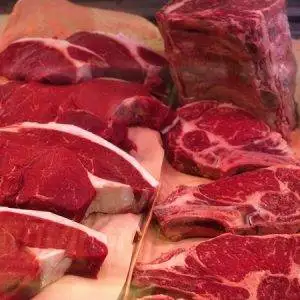
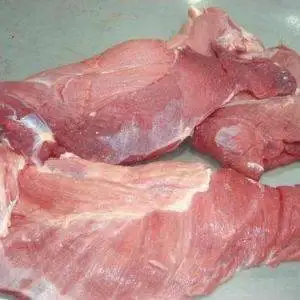
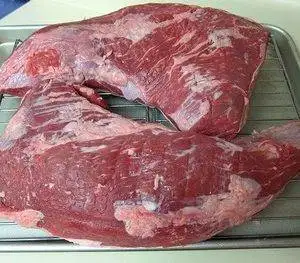
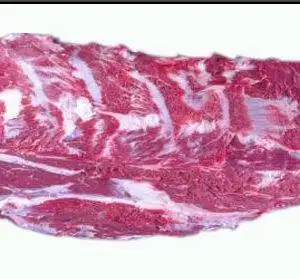
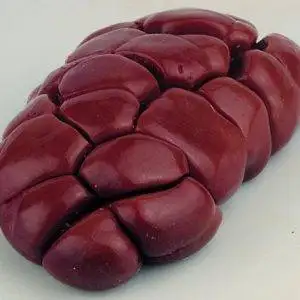
Reviews
There are no reviews yet.